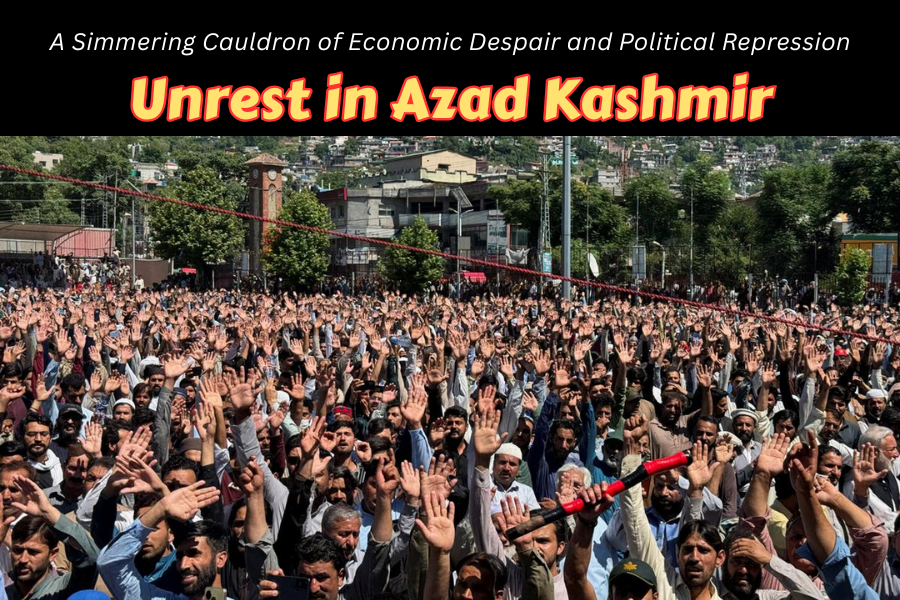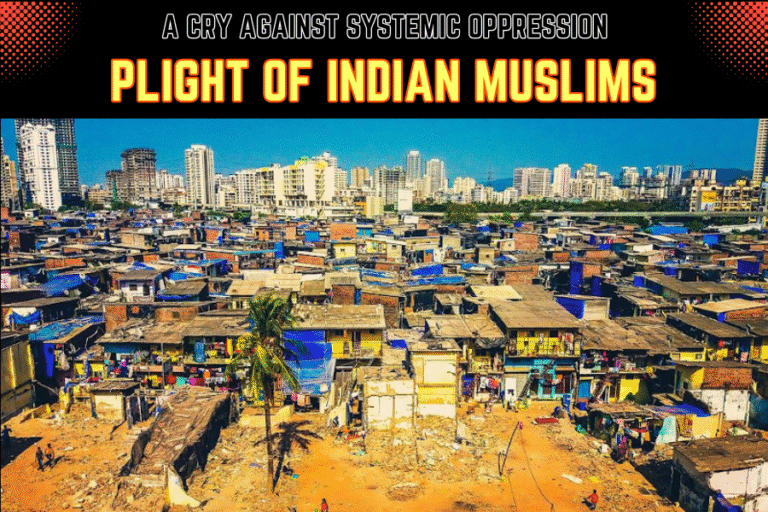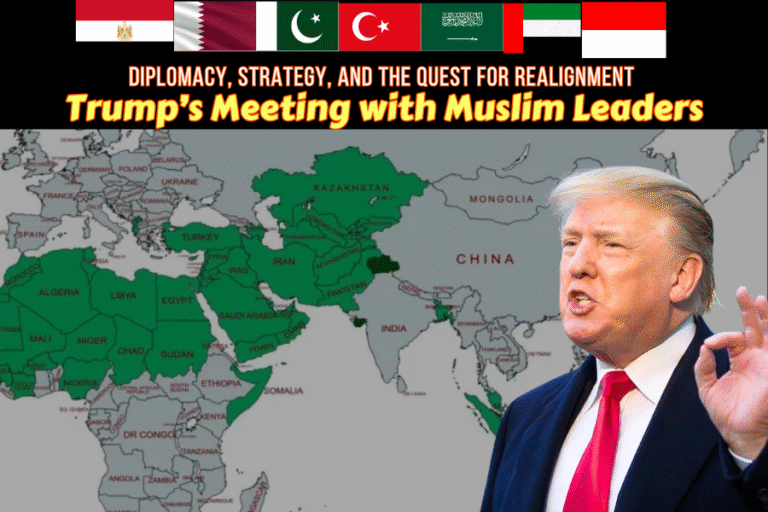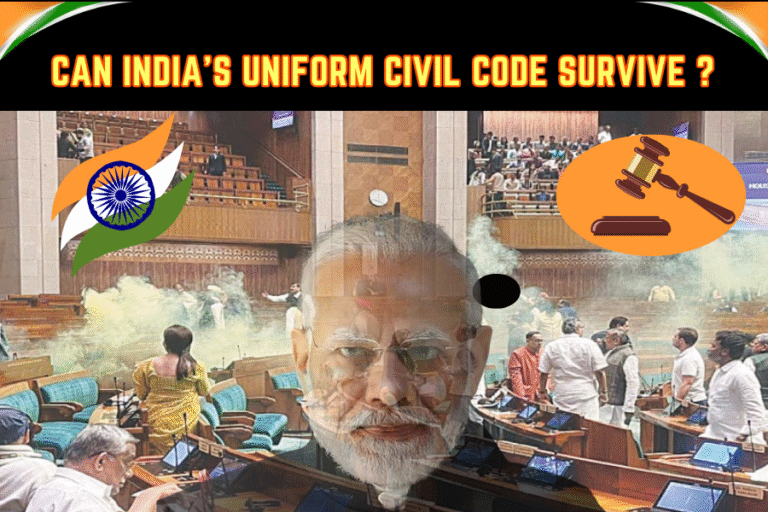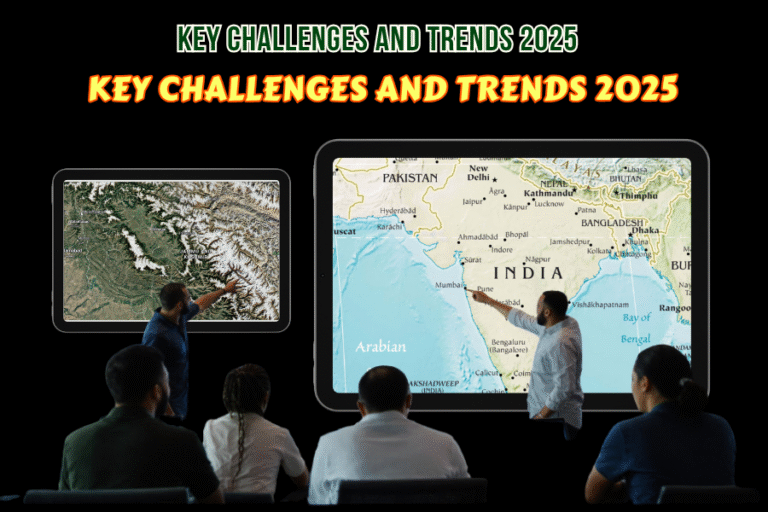(By Khalid Masood)
October 2, 2025
In the shadow of the snow-capped Pir Panjal mountains, Azad Jammu and Kashmir (AJK)—Pakistan’s administered portion of the disputed Kashmir region—has erupted into chaos. What began as a peaceful shutdown over skyrocketing food and electricity prices has spiraled into deadly clashes, leaving at least nine dead (including three policemen and six civilians) and hundreds injured as of this writing. A communications blackout imposed since September 29 has shrouded the unrest in secrecy, fueling accusations of deliberate suppression by Pakistani authorities. While mainstream Pakistani media offers fragmented, often sanitized coverage, alternative sources—local YouTube videos, X (formerly Twitter) posts from residents, and independent blogs—paint a vivid picture of desperation, defiance, and bloodshed. This article draws from these grassroots voices to unpack the crisis, its roots, and the precarious path ahead.
The Spark: From Bread Lines to Barricades
The protests ignited on September 29, 2025, called by the Joint Awami Action Committee (JAAC), a coalition of civil society groups demanding economic relief. At the heart: Wheat prices had surged 70% in recent months amid Pakistan’s broader inflation crisis, pushing a 20kg bag to PKR 3,500—unaffordable for many in a region where remittances and remittances-dependent jobs dominate. Electricity tariffs, despite AJK generating hydropower for much of Pakistan (via dams like Mangla), were hiked to PKR 40-50 per unit, contradicting earlier subsidies.
What started as marches in Muzaffarabad, the AJK capital, and Rawalakot quickly swelled into a valley-wide shutdown. By October 1, caravans from districts like Neelum, Kotli, and Mirpur converged on Muzaffarabad, paralyzing roads and markets. Protesters—students, laborers, women, and elders—chanted for “azadi” (freedom) from economic exploitation, not just Indian occupation, a subtle shift in rhetoric that irks Islamabad.
Violence erupted that evening. In Dadyal and Muzaffarabad, demonstrators pelted stones at government offices and pushed shipping containers into rivers to block reinforcements. Pakistani Rangers and Punjab police—deployed from outside AJK—responded with tear gas, rubber bullets, and live fire. Videos smuggled out via VPNs show unarmed crowds, including women and children, fleeing amid chaos; one clip captures a protester scaling a burning vehicle while shouting, “This is our blood for justice!”
Casualties mounted rapidly. Official tallies report three policemen and six civilians killed, with over 150 injured—many from gunshot wounds. Local accounts on X escalate the toll to 14 dead, including a female bystander. The Neelum Bridge, a vital lifeline, became a “battleground,” with reports of protesters setting police vehicles ablaze. By October 2, JAAC suspended the agitation temporarily but vowed resumption if demands aren’t met by October 5.
A blanket internet and mobile shutdown—lasting over 80 hours—has isolated 4.5 million residents. Landlines are jammed, and VPN circumvention is spotty. This echoes tactics used in Balochistan and Gilgit-Baltistan, drawing condemnation from digital rights groups like Bolo Bhi.
Voices from the Ground: Raw Anger in Pixelated Clips
With mainstream outlets like ARY and Geo News accused of peddling “propaganda” (e.g., blaming “Indian agents” or PTI instigation), locals turn to YouTube and X for unfiltered truth. A video titled “PoK Protest News: Angry Locals Clash With Pak Army” (uploaded October 2, viewed 50k+ times) shows Dadyal residents hurling stones at armored vehicles, a woman screaming, “We generate your power—give us light!”
On X, posts pulse with fury. Activist @imanwithik (729 likes) decries: “Army opened fire on unarmed people… 12 killed… no coverage. Funny how we cry for Palestine but stay silent here.” @pakistanwalli, citing locals, reports 14 deaths and blasts the “military junta’s misadventure” of deploying outsiders. A thread from @Merepakistani_O shares shaky footage of “streets shut down, lives lost,” hashtagged #AJKUnderFascism.
Blogs like those on Dawn’s user forums and independent sites (e.g., The Pakistan Telegraph) frame it as a “9th May template”—JAAC allegedly plotting anarchy to discredit the state. Yet, resident @PakiSwift counters: “Unrest inevitable under unelected governments… This weakens national belonging.” A poignant X space hosted by @ManOfOneGod (Sep 30) featured callers from Rawalakot: “We’re not separatists—we want rights as Pakistanis.”
These sources reveal a generational rift: Youth decry “elite capture” (subsidies for the rich, crumbs for the poor), while elders invoke the 1947 uprising against Dogra rule, warning of history repeating.
Historical and Economic Underpinnings: A Region in Chains
AJK’s woes trace to 1947, when tribal lashkars backed by Pakistan liberated it from Maharaja Hari Singh, leading to the Line of Control (LoC) divide. Administered as a semi-autonomous entity under the 1974 Interim Constitution, AJK receives PKR 200 billion+ annually in federal aid—90% of its budget—yet grapples with 25% unemployment and 22% poverty. Hydropower (80% of Pakistan’s north-generated electricity) should be a boon, but locals pay premiums while Islamabad reaps royalties.
Past flare-ups—2019 protests over water rights, 2021 over electoral rigging—highlight chronic grievances: No NFC share like provinces, limited parliamentary voice (only advisory seats), and “colonization” by Punjabi officials. Blogs like those on Tanqeed.org argue this fosters “internal colonialism,” exacerbated by Pakistan’s post-2022 political turmoil (Imran Khan’s ouster fueling anti-establishment sentiment).
The 10-Point Charter: Key Demands (May 2023)
Drawing from JAAC statements, X threads by local activists, and news analyses, the charter focused on economic accessibility, administrative equity, and local empowerment. Here’s the reconstructed list based on primary sources:
- Electricity at Production Cost or Free Up to a Threshold: AJK residents pay PKR 30-50 per unit despite producing power at PKR 2-3 per unit. Demand: Free electricity up to 100 units monthly, with tariffs capped at production cost thereafter. (Rationale: End “resource theft” by the national grid.)
- Subsidized Wheat and Flour: Fix 20kg flour bags at PKR 1,000-2,000 (from PKR 3,500+). Extend subsidies to 48 essential items like sugar, ghee, and rice. (Addresses 70% food inflation hitting low-income families.)
- Abolish Taxes on Essentials: No property tax, income tax, or GST in AJK to ease business burdens. (Targets small traders, who form JAAC’s base, amid Pakistan’s IMF-driven tax hikes.)
- End Perks and Privileges for Elites: Cut allowances, free utilities, and luxuries for politicians, bureaucrats, and judges. (Critiques “elite capture” where subsidies favor the powerful over the poor.)
- Upgrade AJK Bank to Scheduled Status: Convert the state-owned bank into a full scheduled bank for better lending and financial inclusion. (Aims to boost local economy, currently starved of credit.)
- Improve Telecom and Infrastructure: Enhance mobile/internet coverage and fund roads, tunnels (e.g., Lipa and Jhelum valleys), and an international airport. (Tackles isolation in remote areas like Neelum Valley.)
- Reinstate Student Unions and Youth Opportunities: Revive banned unions and prioritize local youth for jobs, interest-free loans, and training. (Responds to 25% youth unemployment and “outsider” hiring biases.)
- Funds for Local Bodies and Governance Reforms: Allocate direct funds to union councils and ensure transparent judicial/administrative processes. (Empowers grassroots bodies over federal puppets.)
- Free Healthcare and Education: Universal access, especially in rural areas, with new facilities and teacher hiring. (Highlights crumbling infrastructure post-2005 earthquake.)
- Royalties and Equitable Resource Sharing: Direct royalties from hydropower dams to AJK coffers, plus clean water access. (Core grievance: AJK subsidizes Pakistan but gets crumbs.)
These points, as shared in a May 2024 X thread by activist @Fkdotpk1, were verified as authentic by JAAC at the time, countering misinformation about “separatist” agendas.
Analysis: Why the Charter Resonated
The 10-point charter was a masterstroke of populism and pragmatism. Economically, it targeted Pakistan’s macro-crisis spillover: 22% AJK poverty rate, remittance-dependent households, and IMF austerity measures that slashed subsidies. Politically, it subtly challenged AJK’s “special status”—advisory assembly seats, no NFC award share—framing demands as “rights as Pakistanis,” not anti-state rebellion. Socially, JAAC’s leaderless, mosque-coordinated model united diverse groups (Kashmiri Muslims, traders, students), echoing 1947’s anti-Dogra uprising but inward-focused.
Critics, including government allies, dismissed it as “unrealistic” (e.g., free electricity amid Pakistan’s energy debt), but it exposed hypocrisies: AJK pays for power it generates. The charter’s success? It forced PKR 23 billion in aid (2024), proving people power over “installed” leaders.
Evolution to the 38-Point Charter (2025)
By October 2025, unmet promises (e.g., delayed subsidies) ballooned the charter to 38 points, incorporating welfare expansions and bolder reforms. Key additions/escalations from sources:
- Political: Abolish 12 “refugee” assembly seats (dilutes local voice); dissolve assemblies for fresh polls.
- Economic/Welfare: Free healthcare/education; youth jobs sans quotas; disaster rehab; farmer support.
- Infrastructure: Taobat-Bhimbir Expressway; clean water grids.
- Governance: Anti-corruption judicial tweaks; tax relief for SMEs.
No public document lists all 38 verbatim (likely due to blackouts and negotiations), but it shifts from relief to restructuring, challenging Islamabad’s control. This mirrors Balochistan’s resource revolts, signaling federal fragility.
Analysis: A Perfect Storm of Neglect and Nationalism
The current unrest isn’t spontaneous—it’s a boil-over from economic austerity (IMF-mandated subsidy cuts) clashing with AJK’s disputed status. JAAC’s 10-point charter—free electricity up to 50 units, wheat at PKR 2,000/20kg, tax abolition—mixes populism with peril; unsustainable “freebies” risk fiscal collapse, as @PakiSwift notes, burdening federal taxpayers.
Government missteps amplify the fire: A July 2024 relief package (PKR 23 billion for subsidies) was delayed, eroding trust. Deploying “external” forces alienates locals, evoking occupation tropes. The blackout, per @UsamaKhilji, mirrors Indian tactics in IIOJK—hypocritical for a state championing Kashmiri self-determination.
Geopolitically, India exploits this: Times of India headlines scream “Pak forces open fire,” amplifying PoK “brutality” to deflect from IIOJK’s own Ladakh unrest (Sep 2025 curfews over grazing rights). X users like @WordsByOsama mock the irony: Right-wing Indians celebrate Ladakh protests as “masterstrokes,” dismiss AJK as “Punjabi whining.”
Critics on X accuse JAAC of PTI ties, echoing May 9 riots, but locals insist it’s organic fury. PM Shehbaz’s October 2 appeal for “peace” and probe order feels performative amid stalled talks.
Future Implications: Escalation, Erosion, and Crossroads
If unresolved, this could cascade: AJK’s volatility might inspire copycat protests in Gilgit-Baltistan (NFC demands) or Balochistan (resource exploitation), straining Pakistan’s federation. Economically, prolonged shutdowns disrupt remittances (USD 2B+ annually) and hydropower, hitting Pakistan’s grid.
Bilaterally, it emboldens India’s “Kashmir integrated” narrative, risking LoC skirmishes—especially with China’s Ladakh border tensions simmering. Internationally, Amnesty and HRW may spotlight the blackout as “digital siege,” pressuring UNHRC sessions.
Long-term: Integration as Pakistan’s 6th province (as @PakiSwift urges) could end “special status” perks but grant full rights—or fuel secessionist whispers if mishandled. Elections, transparency, and subsidy reforms are antidotes; violence only entrenches alienation.
A Cry for Dignity Amid the Silence
Azad Kashmir’s streets echo a universal plea: Dignity over dependency. As one YouTube commenter laments in a Rawalakot uprising clip, “We fought for azadi in ’47—now we fight for atta [flour].” With talks dangling and tensions taut, the onus falls on Islamabad: Dialogue, not drones. Failure risks turning a regional rumble into a national reckoning—and further dimming the “paradise on earth” that Kashmir was meant to be.

